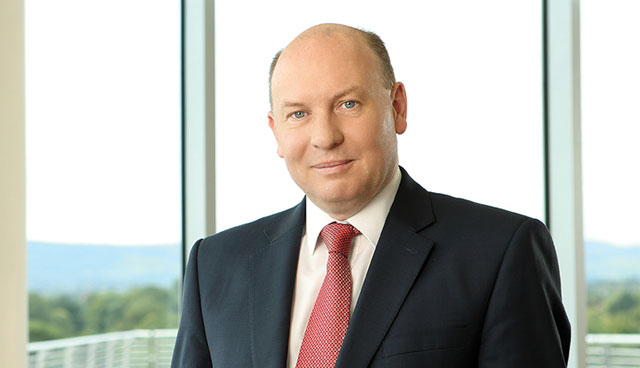Evolving to meet demand


The electricity industry is undoubtedly in a period of transition. In the last decade alone we have seen the wide scale integration of renewables onto our system, the rapid growth of the demand response sector and the development of ever more sophisticated markets. EirGrid Group Chief Executive Fintan Slye writes.
In spite of the wider evolutionary process, the structure of the electricity industry itself arguably hasn’t changed all that much over nearly 100 years. We have the same basic value chain from generation to transmission to distribution to retail where users are charged a relatively simple price per unit consumed.
Advances in technology and communication are changing this. What was previously impossible is now most certainly possible.
The internet of things is enabling machine-to-machine communication and directly integrating the physical world into more efficient, economic energy systems. Advancements in chemistry will further transform the concept of battery storage in a power system context. There will be complementary major electrification of new sectors of the energy industry, for example car transport and home heating.
“This shift, which is not unique to Ireland, poses very difficult questions for our industry and, naturally, the ambiguity or lack of clarity on the way forward is uncomfortable.”
This combination of big data, the advent of the cloud and advances in science are all changing the way customers will interact with the power system. The time when consumers were passive recipients of what utility companies wanted to sell them is nearly over.
Looking at ourselves as a power system operator, the old world of ‘command and control’ to operate the power system simply will not hold. Instead, we will need to influence behaviours of residential, commercial and industrial consumers in a manner which aligns their needs with the needs of the system. This will herald change right across our business – in system planning, grid development, system and market operation.
This shift, which is not unique to Ireland, poses very difficult questions for our industry and, naturally, the ambiguity or lack of clarity on the way forward is uncomfortable.
Look at the impacts disruptive companies such as Uber, Airbnb and Netflix have had on their previously very traditional industries in such a short period of time. This rapid change is coming to electricity and indeed has started, though is only niche at the moment. However, we are approaching a tipping point; and then change will be driven, and indeed demanded, by customers, not, as it is today, by industry and by policy. When this happens it will happen fast.
Preparing for, and responding to, this change, this uncertainty, this transition is the big challenge for our sector.
EirGrid Group is playing its part in meeting this challenge. A recent example has been the introduction of scenario planning into how we plan the electricity transmission grid of tomorrow. There are a wide range of factors which can influence the evolution of the electricity sector. Using scenario planning allows us to prepare for this uncertain future. It encourages flexible and robust decision making and leads to greater availability of information to inform decisions.
At the very heart of this approach is engagement with our stakeholders. Our scenarios, which will underpin how we plan the transmission grid, have been developed using our own experience and after significant input from government departments and agencies, energy research groups, industry representatives and the public via an ongoing consultation process. Widespread collaboration like this is critical in this period of transition.
Our industry is undergoing rapid change driven by many different factors. In aggregate this will challenge the very foundations of our existing business models. However, by taking a proactive, innovative and collaborative approach we can turn these challenges into opportunities and continue to offer secure, competitively costed and sustainable power to our customers.





